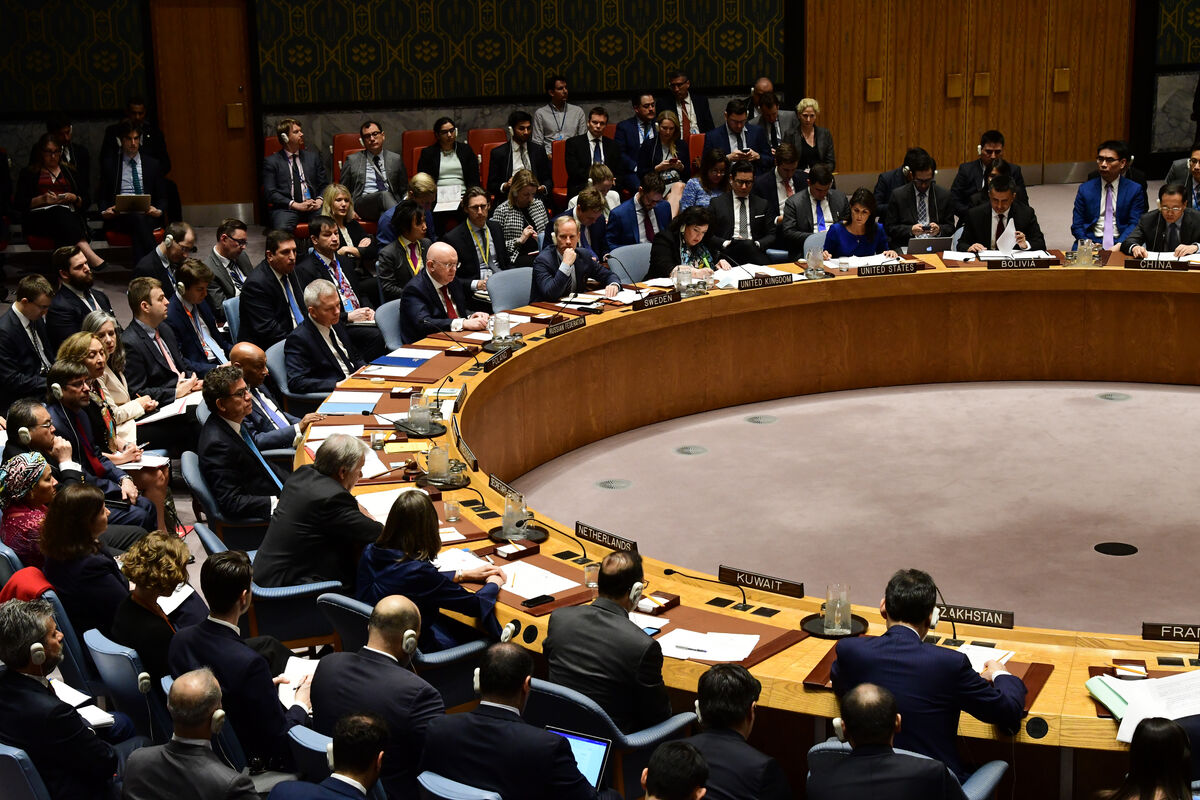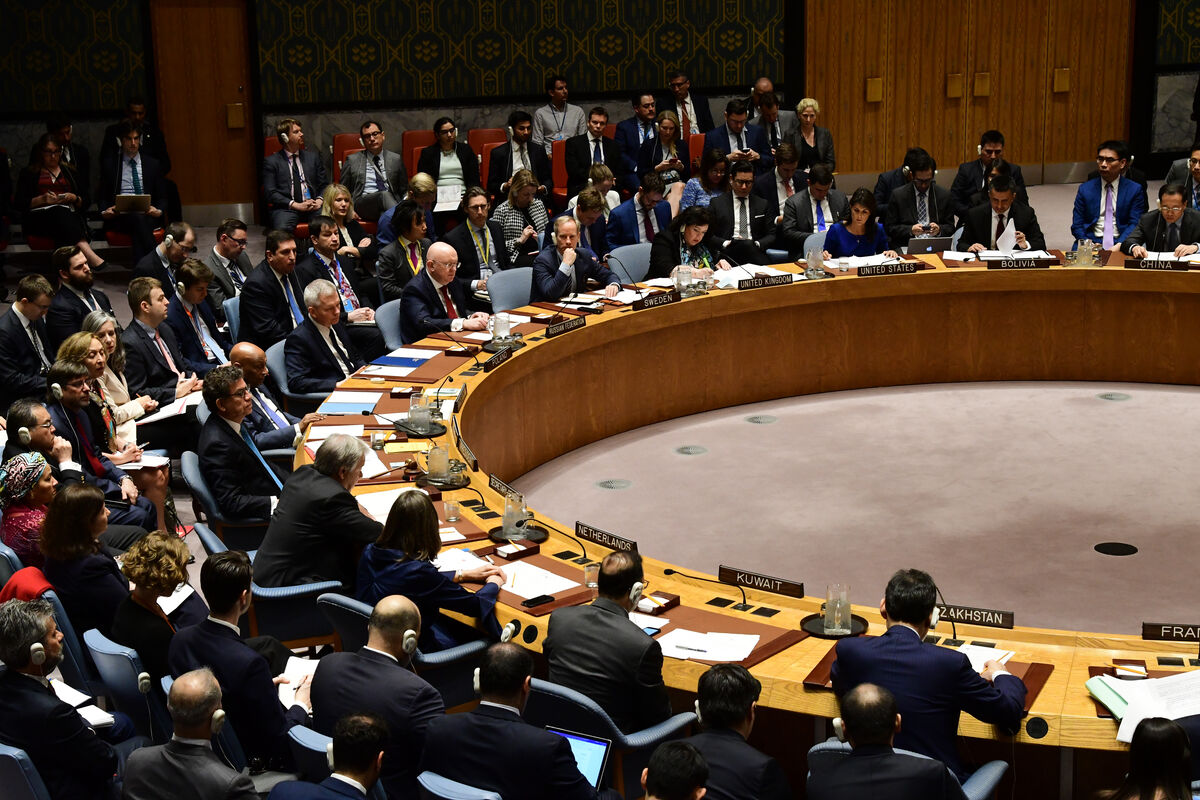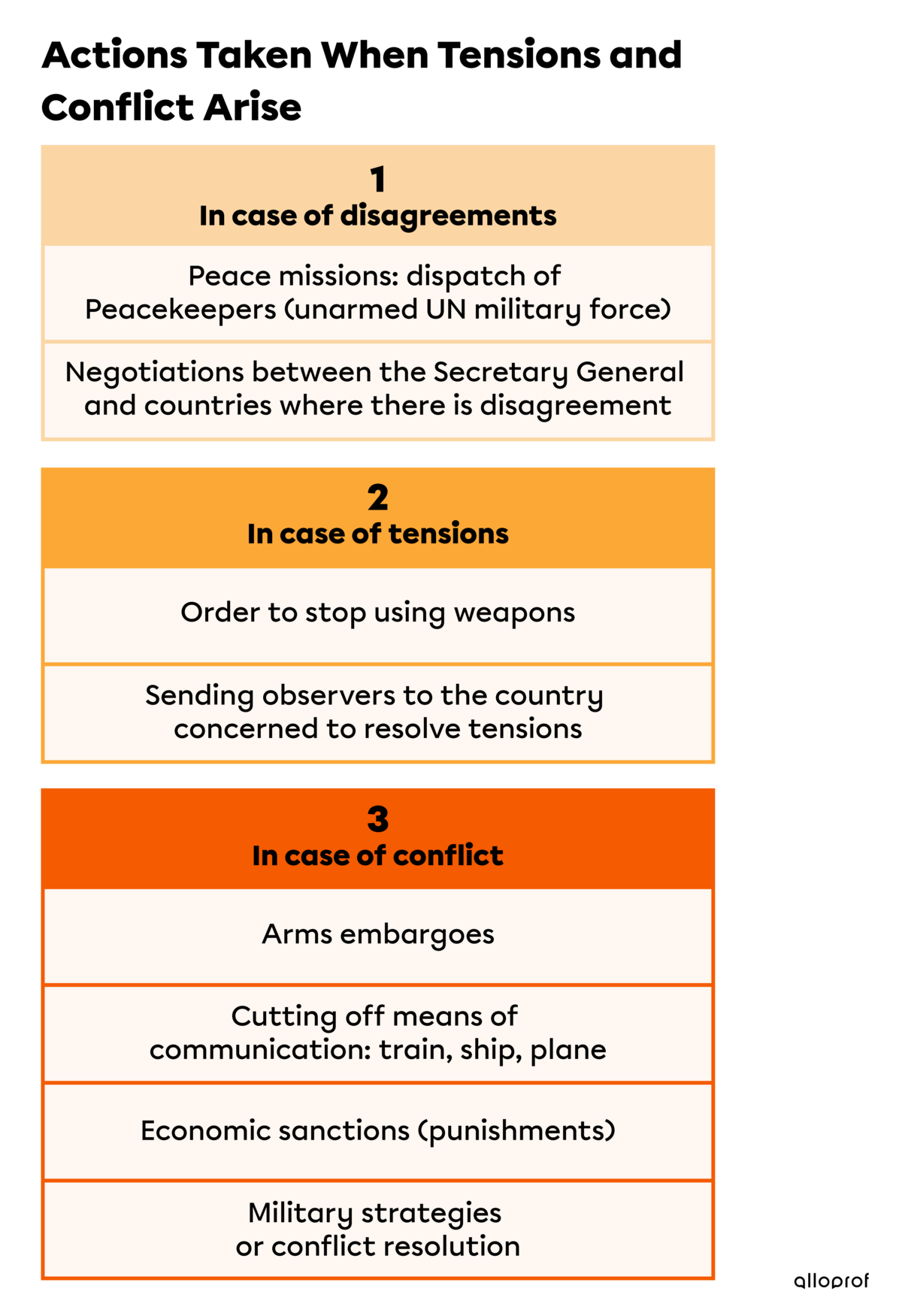The United Nations Security Council is one of the 6 institutions created when the United Nations (UN) was founded in 1945. Unlike the General Assembly, which adopts resolutions and offers recommendations related to global security, the Security Council is the only institution that can take concrete action to resolve tension and conflicts.
The United Nations Security Council is one of the 6 institutions created when the United Nations (UN) was founded in 1945. Unlike the General Assembly, which adopts resolutions and offers recommendations related to global security, the Security Council is the only institution that can take concrete action to resolve tension and conflicts.

A UN Security Council meeting held on April 14, 2018, to discuss a Russian resolution that condemned US intervention in Syria.
Source: Akatz, Shutterstock.com
The member countries of the Security Council were the first ones to have the right to use atomic and nuclear energy. However, this raised many concerns around the world, which is why the UN created the International Atomic Energy Agency (IAEA) in 1957 to prevent this energy from being used for military purposes. This agency ensures that every state that possesses and/or develops nuclear energy does so safely. The Security Council has an important influence with regard to the various decisions made by the IAEA.

A UN Security Council meeting held on April 14, 2018, to discuss a Russian resolution that condemned US intervention in Syria.
Source: Akatz, Shutterstock.com
The Security Council is made up of 15 member states, 5 permanent and 10 non-permanent. The 5 permanent member states are:
- China
- United States
- Russia
- France
- United Kingdom
-
A state is a territorial and political entity administered by a government. It has defined borders within which a population lives.
To better understand what a state is, you can watch the video What is… a State?.
-
An institution is an organization governed by rules and laws that plays a specific role in society. Its role may be political, social, economic, religious, etc.
To better understand what an institution is, you can watch the video What is… an institution?.
These states have the status of permanent members because of their participation in World War II. Non-permanent members are elected by the General Assembly and serve for 2 years before being replaced by other member states. A state can be re-elected over the years, but each year half of the non-permanent members must be replaced. This rotation ensures fair representation for all the major regions of the world, including Africa, Asia, Latin America, the Caribbean and Europe.
Canada has been a non-permanent member of the Security Council six times since 1948. Visit the following page to view all the member states (permanent and non-permanent) of the Council since it was created: Elected Member Countries
During a Council meeting, any of the 193 UN member states, even one that is not a Council member, may be asked to participate. A state may be asked to participate in a Council meeting for the following reasons:
- It is involved in a disagreement or conflict that threatens global security.
- The disagreement or conflict affects its internal affairs (political, social, cultural, etc.).
The Council has the power to authorize a non-member state to participate in its discussions. However, the non-member state has no voting rights.
As soon as the General Assembly realizes that national or international conflicts may violate the rights of a population and threaten world security, it votes on resolutions to restore the situation. These resolutions are official decisions about the course of action to be taken to end the conflicts.
The Assembly’s resolutions are forwarded to the Security Council. Its 15 members then vote on whether or not to implement the Assembly’s resolutions.
Two conditions must be met for the Security Council to adopt a resolution:
- Of the current 15 members, 9 or more must vote in favour of the resolution.
- The 5 permanent members (China, the United States, Russia, France, the United Kingdom) must vote in favour of the resolution. However, they may abstain without impacting the adoption of the resolution.
A resolution is a decision made by an assembly based on a vote.
Only the permanent members have the right of veto. This means that they have the right to reject a resolution, even if it has been adopted by a majority vote of the Council members. Once a permanent member votes against a resolution, it is automatically rejected.
The right of veto is the power to block the enforcement of a decision, resolution or law.
In September 2019, Russia and China used their right of veto to block the adoption of a ceasefire in Idlib, Syria, where a civil war had been raging since 2011, leaving more than 300 000 people dead. This is the 13th time Russia has used its right of veto on a resolution concerning Syria.
When resolutions are passed, all UN member states must comply with these decisions.
When the Security Council adopts a resolution, it must lead to action.
The following diagram shows the actions to be taken when there is a disagreement between countries or within a single country:

An embargo is a political and diplomatic measure that puts an official ban on trade or other commercial activity with a particular country.
Conflict in a territory implies armed fighting which means many people are dying. Tension between regions or countries can also lead to fighting or acts of terrorism, but weapons are not used in these situations. Tensions are often linked to issues of identity, religion, ideology, culture or territory. For an armed conflict to be considered a war, there must be at least 1000 deaths per year.
The Secretary-General is considered the highest-ranking official of the United Nations and is responsible for preventing international conflicts from starting and/or escalating. This person works all over the world, meeting with heads of state and taking part in meetings of the 6 UN organs to better coordinate their actions.
Visit the following page to find out more about the Secretary-General’s role: The Role of the Secretary-General
In 1991, the UN helped to end to apartheid (an Afrikaans word meaning “separateness”) in South Africa after imposing several sanctions on the country for close to 30 years. Among other measures, it imposed an arms and oil embargo to pressure the state to diminish racial discrimination within its territory.
In 2004, the Security Council passed a resolution (1559) that allowed it to intervene in Lebanon. The UN Secretary-General sent a team to force Syria’s military troops to ensure that Syrian troops withdrew from Lebanese territory, so that it could regain its sovereignty.
-
Discrimination is the unequal or unfavourable treatment of people based on their ethnicity, name, gender, physical appearance, religion or membership in a group. They are then said to be a victim of discrimination.
-
Sovereignty is the absolute power of a state to govern itself by making its own laws and enforcing them within its territory. A sovereign state is independent, meaning that it cannot be controlled by any other state or institution.
To better understand what sovereignty is, you can watch the video Sovereignty and Interference.
In the event of unresolved conflicts, the UN, which has no army, demands that member states lend their military forces to go and restore peace in the country or countries concerned.
Developing countries provide the most men and women for the UN peacekeepers, the name given to the soldiers deployed for UN missions. Ethiopia sends the most soldiers on peacekeeping missions, followed by Bangladesh, Rwanda, Nepal, India and Pakistan.
To learn more about this topic, see the following:
Boniface, Pascal. 50 idées reçues sur l'état du monde, 2015, p. 113.
Brodeur-Girard, Sébastien and collabs. Immédiat, 2009, p. 200-201.
Choquette, Michel and collabs. Enjeux, 2010, p. 276-279.
Ladouceur, Maude and collabs. Globe, 2014, p. 209.